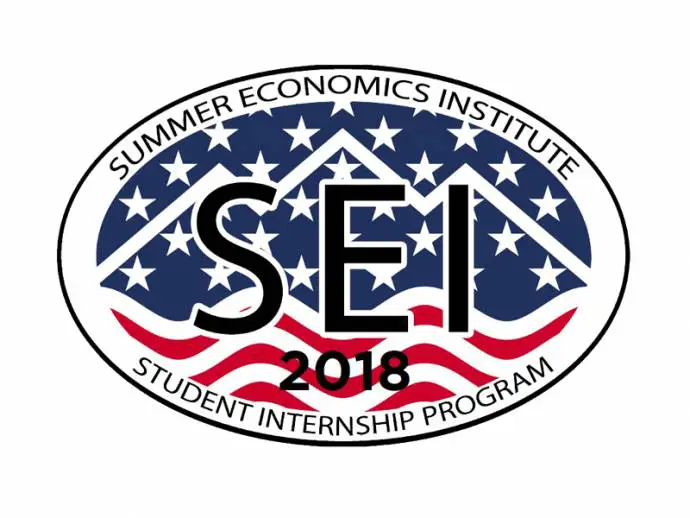August 1, 2018
This year’s Summer Economics Institute (SEI), the seventh organized and funded by the US Embassy Ljubljana and the American Chamber of Commerce in Slovenia (AmCham Slovenia), was a little different to previous editions, in that the 11 Slovenian students who took part were joined by eight Americans, in Slovenia as part of the European Experience in the Green Heart of Europe project. This latter, taking place for the first time and funded by the US government, via a grant to AmCham Slovenia, is a way to encourage American students to study abroad by joining the SEI. The program thus gave the Slovenes an opportunity to work with a group of young Americans and see if the latter’s much vaunted entrepreneurialism and can-do spirit lived up to the hype, while enabling the former to expand their horizons, make international connections and see things on a different scale.
The original idea for the SEI came from Charlotte Taft, who coordinates the USAlumni program at the US Embassy, and is aimed at giving university students a hands-on look at how economics, business and entrepreneurship work through more than 20 site visits, targeted lectures and expert talks in a variety of fields, as well as a Lean Start-Up course. This course is funded by the US Embassy and led by a US professor of entrepreneurship, Dr. Jay Ebben, visiting from the University of St. Thomas, Minnesota, while AmCham Slovenia organizes month-long internships for each student at its member companies. After two weeks of hard work both in and out of the classroom, the students then presented their Lean Start-Up projects, an event that I attended, as outlined later in this story
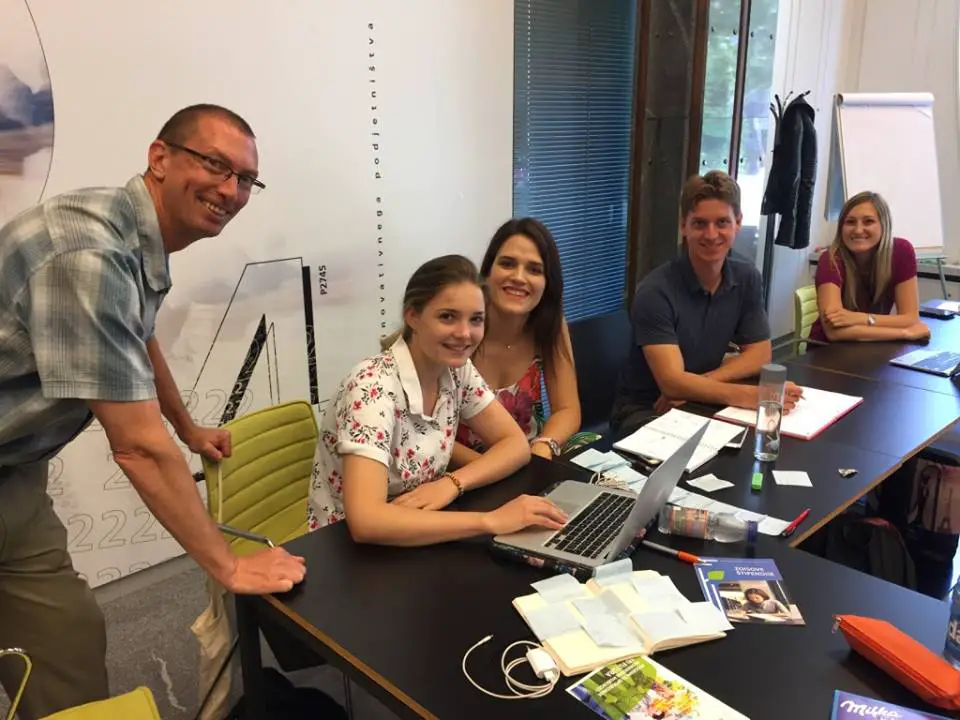
Professor Ebben, Martina, Nika, Matt and Claire: Photo: si.usembassy.gov
The program is an active one, aimed not at book learning but on field visits, guest lectures, and internships with members of AmCham Slovenia, such as ABC Accelerator, Aviat, Bisnode, Coca-Cola HBC Slovenia, Circular Change, Droga Kolinska, IBM Slovenia, KPMG Slovenia, and LanguageSitter, among others. The idea is to give participants firsthand exposure to the business environment in Slovenia. While mornings were spent in the classroom, the afternoons were taken up with activities such as visits to the Ministry of Finance and Bank of Slovenia, where the students heard presentations on intellectual property, venture capital and angel investing, as well as on start-up and small business support organizations, and on start-ups themselves.
The students were also put into four groups, each a mixture of Slovenes and Americans, and tasked with coming up with a new product or service that they’d then pitch in a final poster event, attended by Ms. Taft, Dr. Ebben, Tonja Avsenik of AmCham Slovenia, SEI alumni, and Gregor Sakovič, head of the NLB Center of Innovative Entrepreneurship (Center inovativnega podjetništva), which hosted the presentations in the heart of Ljubljana, and is itself a hive of entrepreneurial activity, encouraging mentoring and accelerator programs to help give fresh ideas the support they need to be realized.
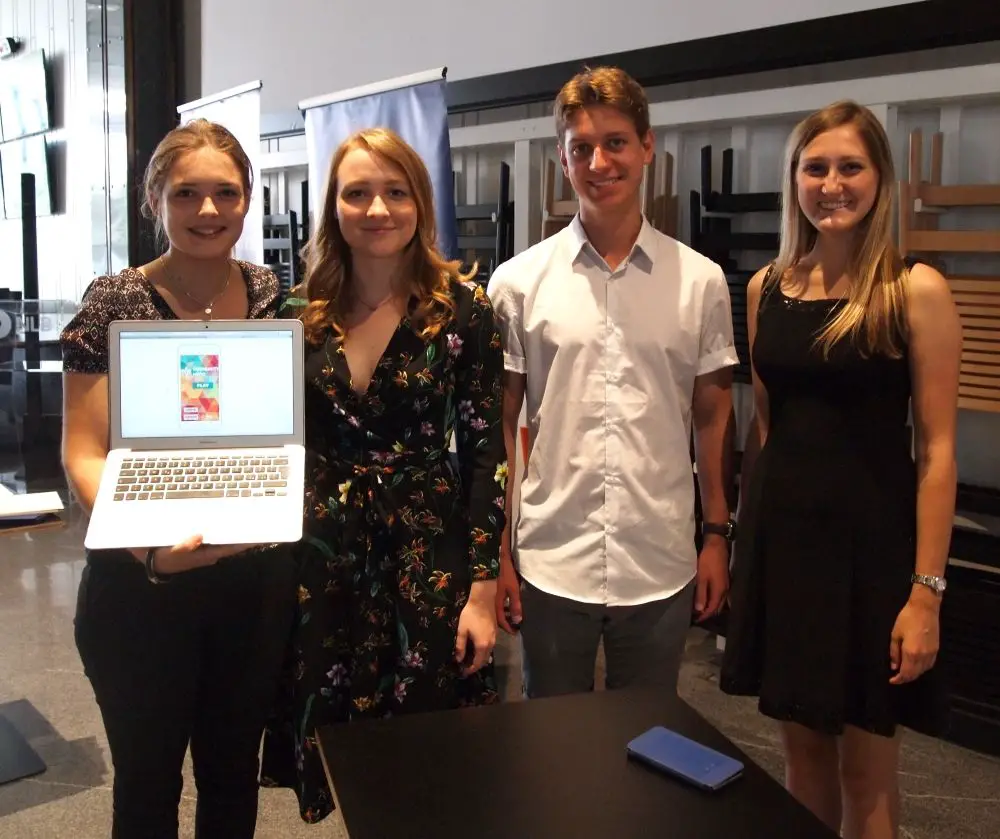
Photo: JL Flanner
Martina, Ema, Matt, Claire and Nika (not pictured) pitched Community Hero, an app to gamify volunteering and leverage the power of social networks and competition. Organizations would use the app to promote volunteering positions, while the resulting volunteers would gain points for the work done. The social and competitive aspects come into play via the leaderboard on the app, encouraging friends, rivals and strangers to compete with each other to volunteer, gain points, and thus a higher score.
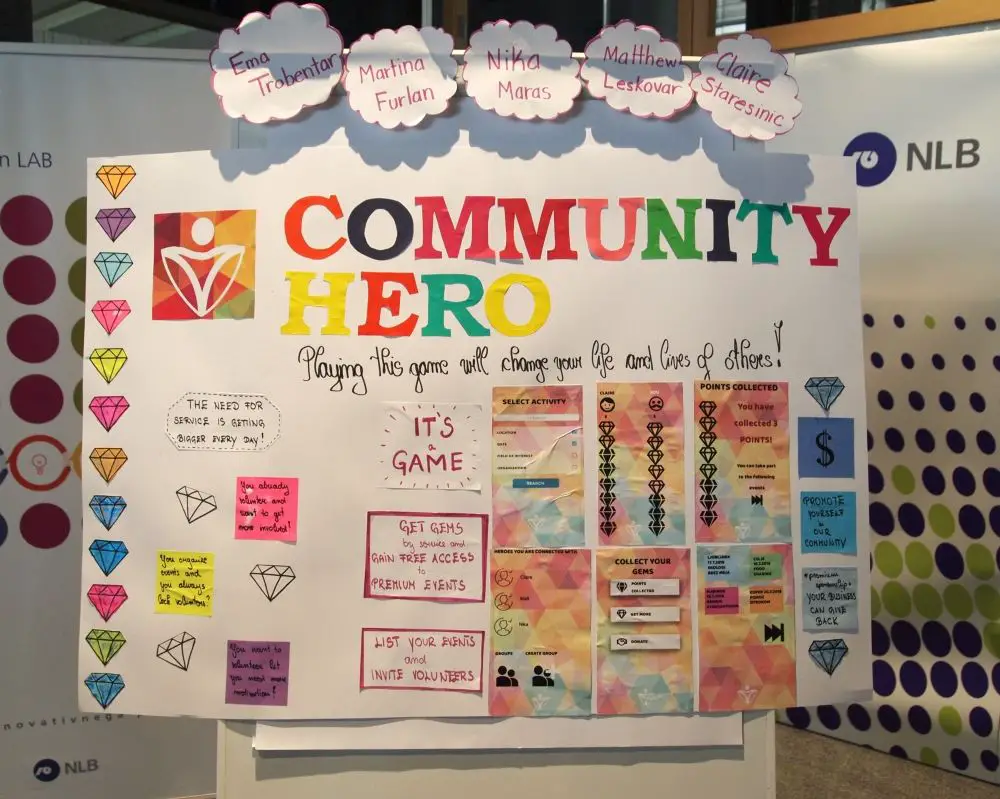
Photo: JL Flanner
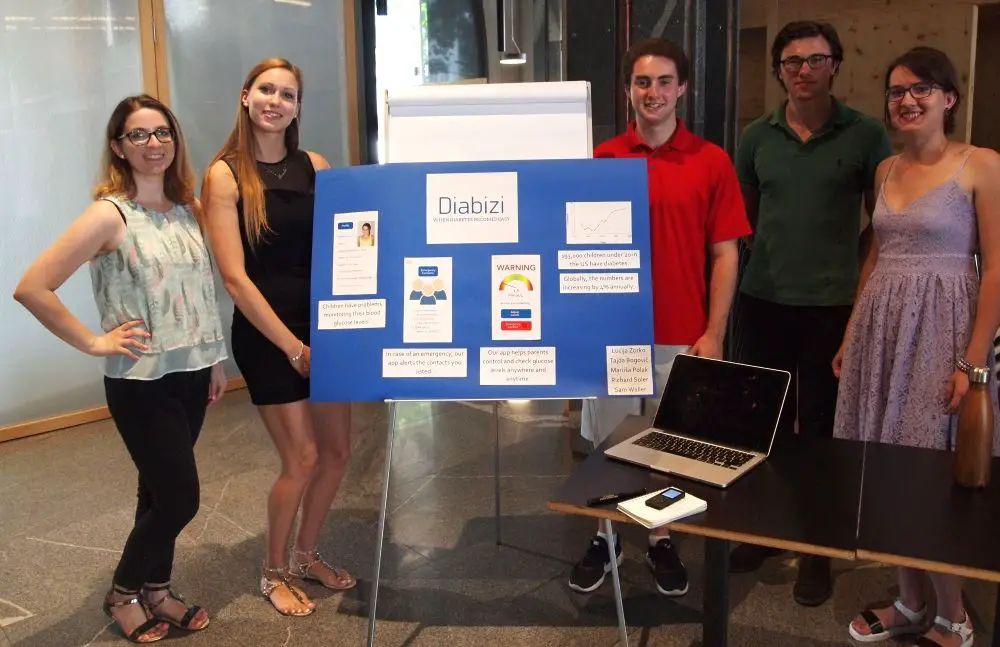
Photo: JL Flanner
Lucija, Maruša, Richard, Sam and Tajda, worked on another app, one called Diabizi, a prototype of which can be seen here. This is aimed at children, the infirm and otherwise indisposed who suffer from diabetes and would benefit from someone else being able to monitor their insulin levels. The app does this by getting data from the insulin pump the diabetic user is wearing, and it can thus know when something is wrong even before the person does, and so advise them what to do (eat something, for example). It can also automatically alert a designated contact that assistance might soon be required, giving greater peace of mind to parents of young diabetics.
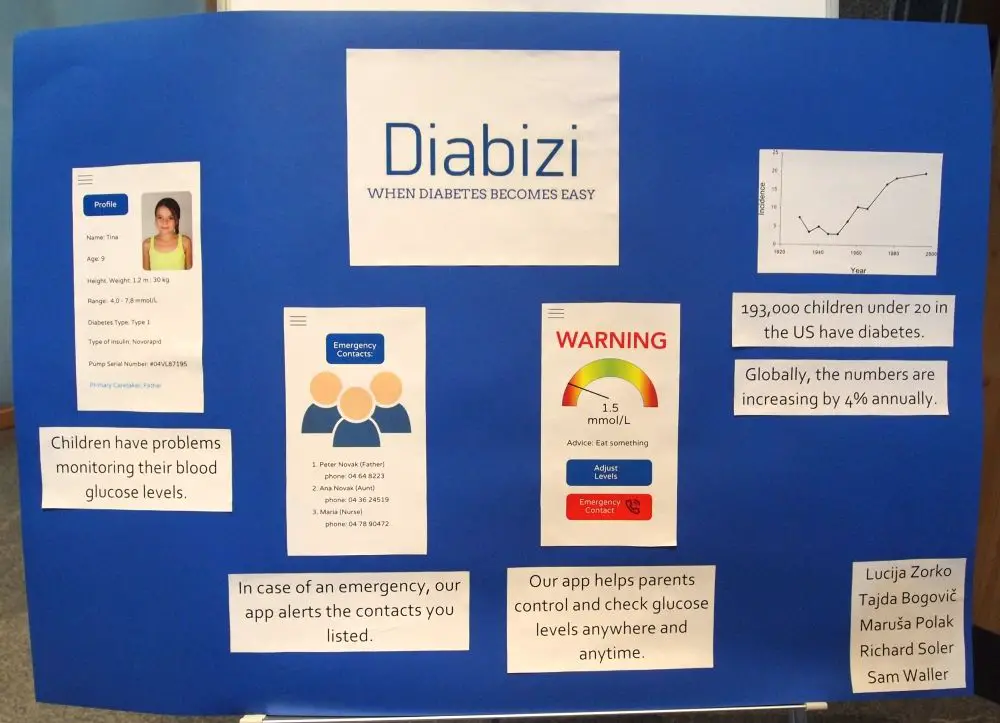
Photo: JL Flanner
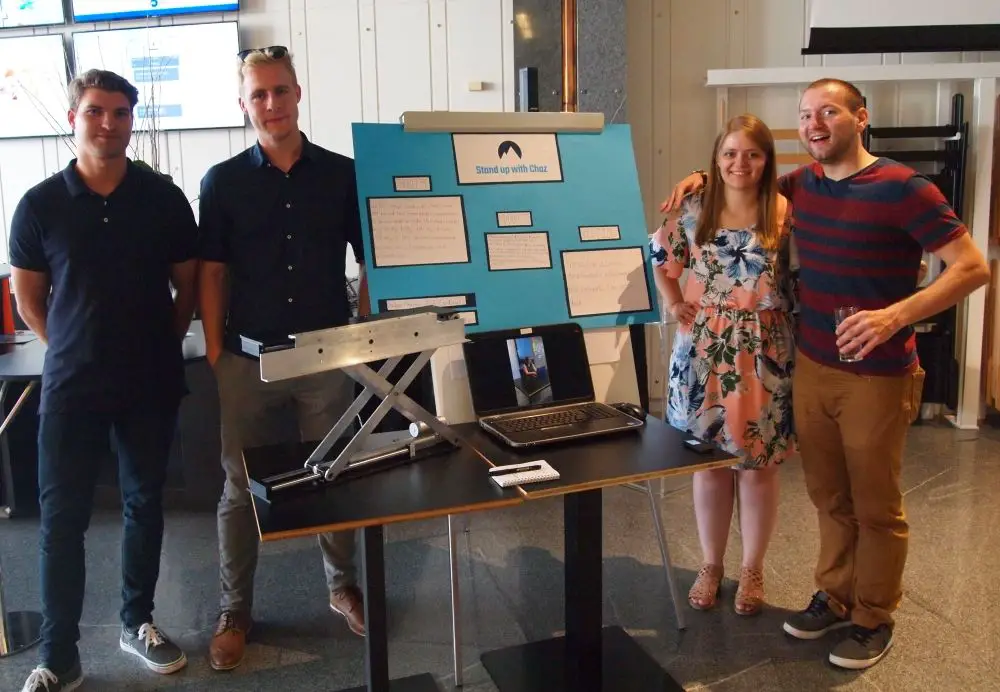
Photo: JL Flanner
The next presentation was by Janez, Gašpar, Meghan and Josh. This group had two engineers, and perhaps this was why they came up with a physical product, a working prototype of which was on display. This was a pneumatic device to convert a normal table into a standing desk and back again at the touch of button, with the added selling point that the height of the resulting work surface could be tailored to the needs of the user, broadening the potential customers to those ranging in height from under 150 cm to over two meters, and making it possible for people of wildly differing heights to make use of the same convertible desk.
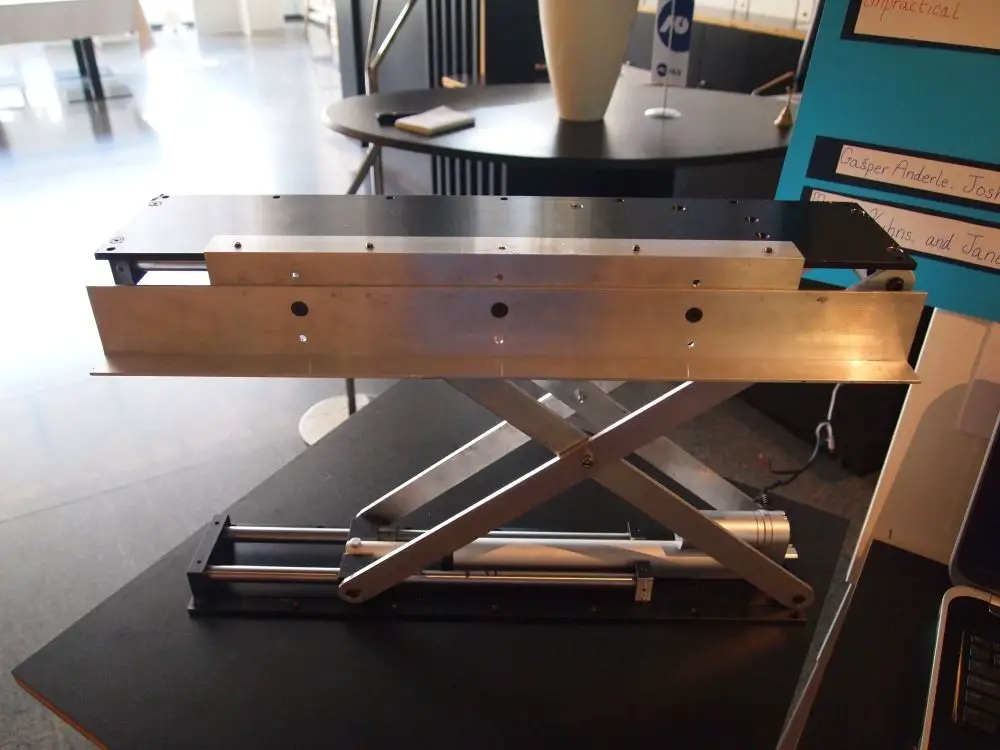
Photo: JL Flanner
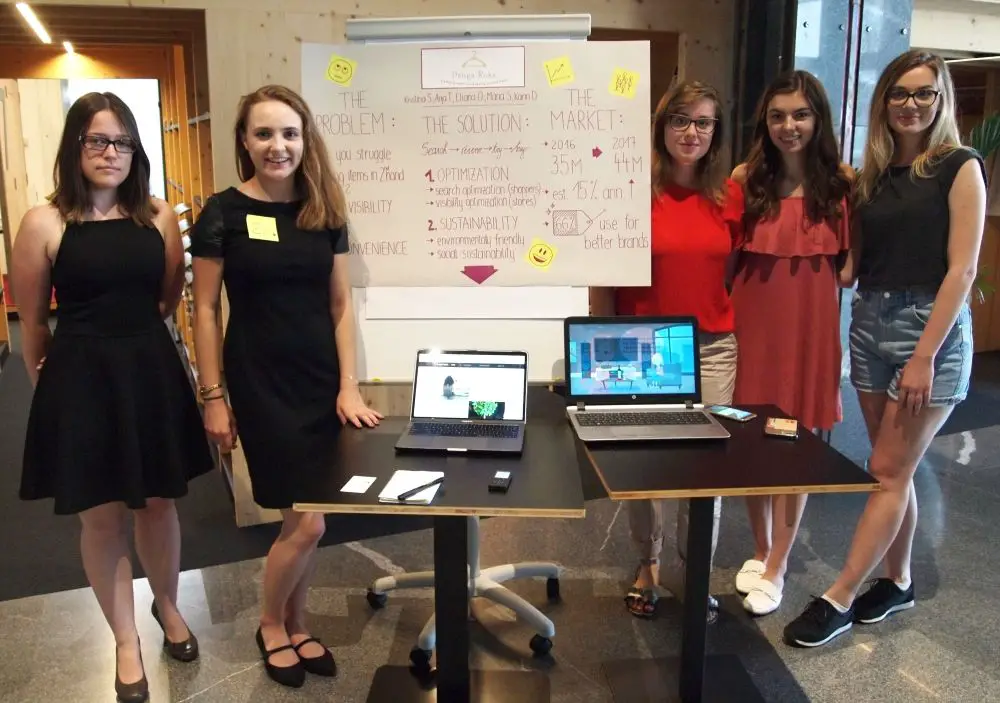
Photo: JL Flanner
The final presentation was from Kristina, Eliana, Karin, Maria, and Anja, who, having abandoned an earlier idea on Monday had by Friday come up with an entirely new one, pivoting to an app to connect the growing market of second hand and vintage shoppers with the items they desire, and to help such stores to market their used goods more effectively. Instead of being lost on the racks, the app would enable stores to enter details of new items as they arrived – brand, size, style and so on – making them searchable by customers on the go. You’d thus never have to trawl the vintage stores again each weekend looking for that Halston jacket or ’84 Adidas, but could search and scroll over a more relaxed brunch and make an online order instead.
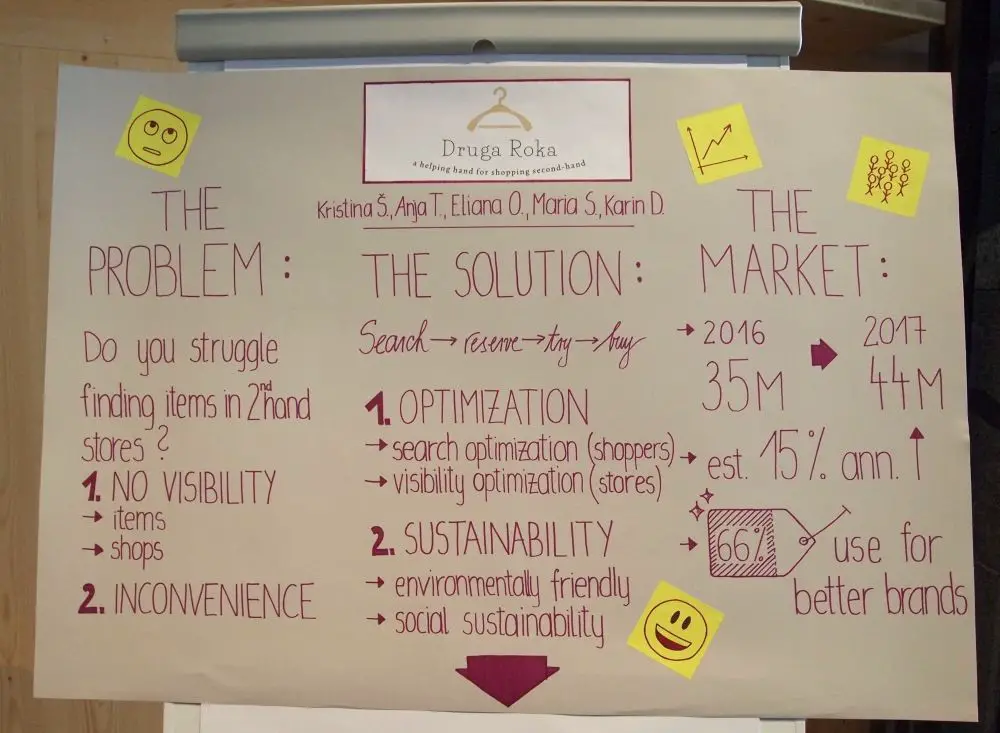
Photo: JL Flanner
It was an inspiring morning, filled with the kind of optimism, energy, teamwork and flexibility that drive start-ups the world over, and it’s a testament to the good work that the US Embassy, AmCham Slovenia, the NLB Business Centre and many others have been doing that the students were able to come together in a mere two weeks, with days full of with lectures and visits, and produce ideas that were coherent and often compelling. As such, it’s to be hoped that more projects like this, both international and domestic, will continue to be staged, in order to widen the horizons of foreign visitors and raise the ambitions of Slovenes.
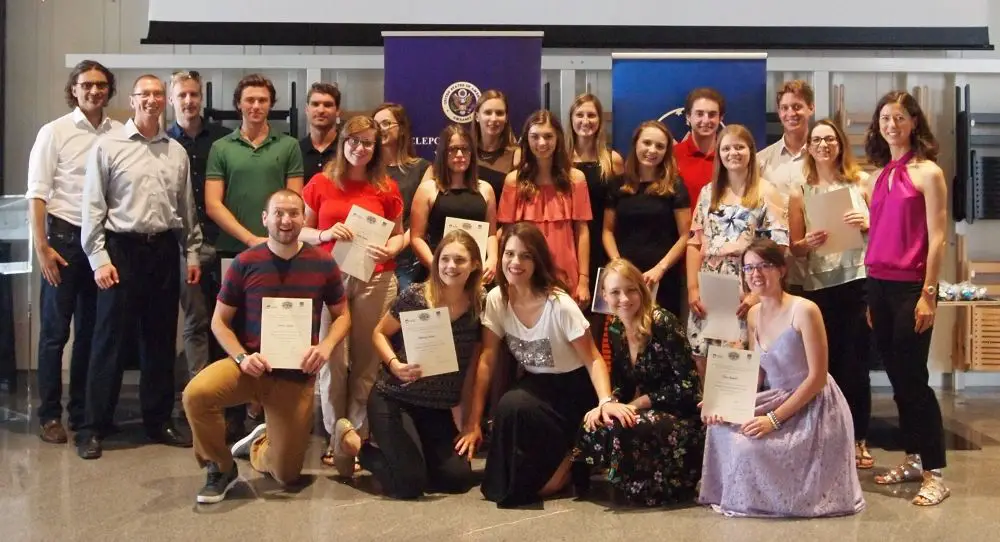
A group picture at the end of the poster session. Photo: JL Flanner
As Ms. Taft said, when looking back at this year’s program: “The ecosystem in Slovenia has improved tremendously in the past seven or eight years. Entrepreneurial initiatives are being strongly supported on a number of levels, state, public, private and so on, which is also showing up in the increase in the number of successful start-ups in Slovenia. We like to think that SEI is a part of this by taking university students that show an interest in entrepreneurship and giving them the tools to make their ideas a reality.”

